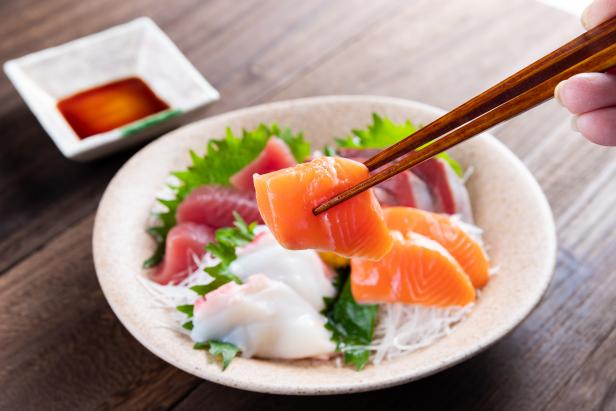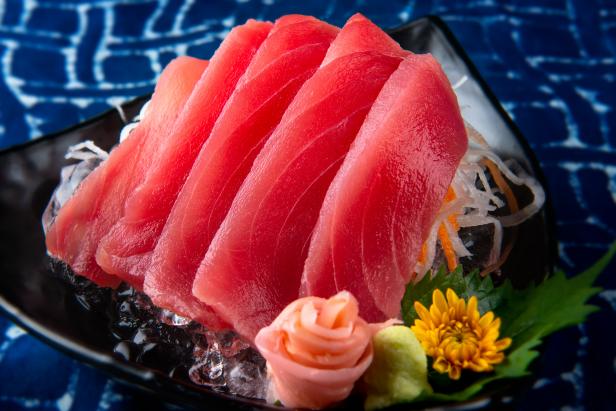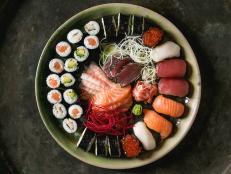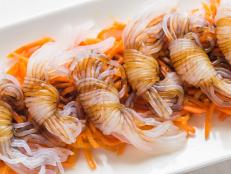What Is Sashimi?
And what’s the best way to eat it?

Khaichuin Sim/Getty Images
By Layla Khoury-Hanold for Food Network Kitchen
Layla Khoury-Hanold is a contributor at Food Network.
If you visit at Japanese or sushi restaurants, you might see sashimi on the menu. To learn more about what exactly sashimi is, we consulted Jane Matsumoto, Director of Culinary Arts at The Japanese American Cultural & Community Center (JACCC), and Chris Ono, chef of Hansei at the JACCC.
What Is Sashimi?
Sashimi is a Japanese dish of sliced raw fish, seafood or protein. “Sashimi literally means pierced meat, and it originated in Japan around 1100,” Ono says. “Sashimi can consist of fish and meat and cured proteins such as horse meat and pheasant. While fish is traditionally consumed as sashimi, horse meat–baniku– has been served as a delicacy and is commonly referred to as basashi to differentiate it from sashimi.”
Sashimi features premium slices of raw fish or seafood, and is served arranged on a platter with garnishes and other elements that add color and create an appealing presentation. “Incorporating seasonal ingredients is as important an aspect as the types of fish, as is choosing the right serving dish for that given season,” Ono says.
Two common sashimi plating components include daikon tsuma and shisho leaves, which are arranged to create dimension and depth.
“Tsuma describes crisp daikon threads that are mounded to support sashimi pieces and separate multiple types of seafood in one presentation that also may include shrimp, clams and marinated fish,” Matsumoto adds. “With other garnishes such as cucumbers, bright green shiso leaves, kaiware radish sprouts, bamboo leaves and edible flowers that embellish plates and platters, sushi chefs can create beautiful sashimi presentations that resemble nature's undulating landscape of hills and valleys.”

yumehana/Getty Images
For more information about raw fish preparations, check out our primer What is Crudo, which also covers the differences among sushi, sashimi and crudo.
How to Eat Sashimi
To eat sashimi, it's customary to use chopsticks to dip slices of fish into sauces and seasonings. “Sashimi is enhanced by a dipping sauce or with a brush of sauce prior to serving,” Ono says. “Sashimi is typically eaten simply with soy sauce, wasabi, or sometimes yuzu kosho, lemon and sea salt. Other variations of sauces include ponzu or dashi shoyu,” Ono says.
Popular Types of Sashimi
Ono shares that popular types of sashimi include:
Maguro: tuna
Buri: yellowtail amberjack
Sake: salmon
Ikura: salmon roe
Uni: sea urchin
Shiro maguro: albacore tuna
Related Links:

Nopadol Uengbunchoo/Getty Images































































